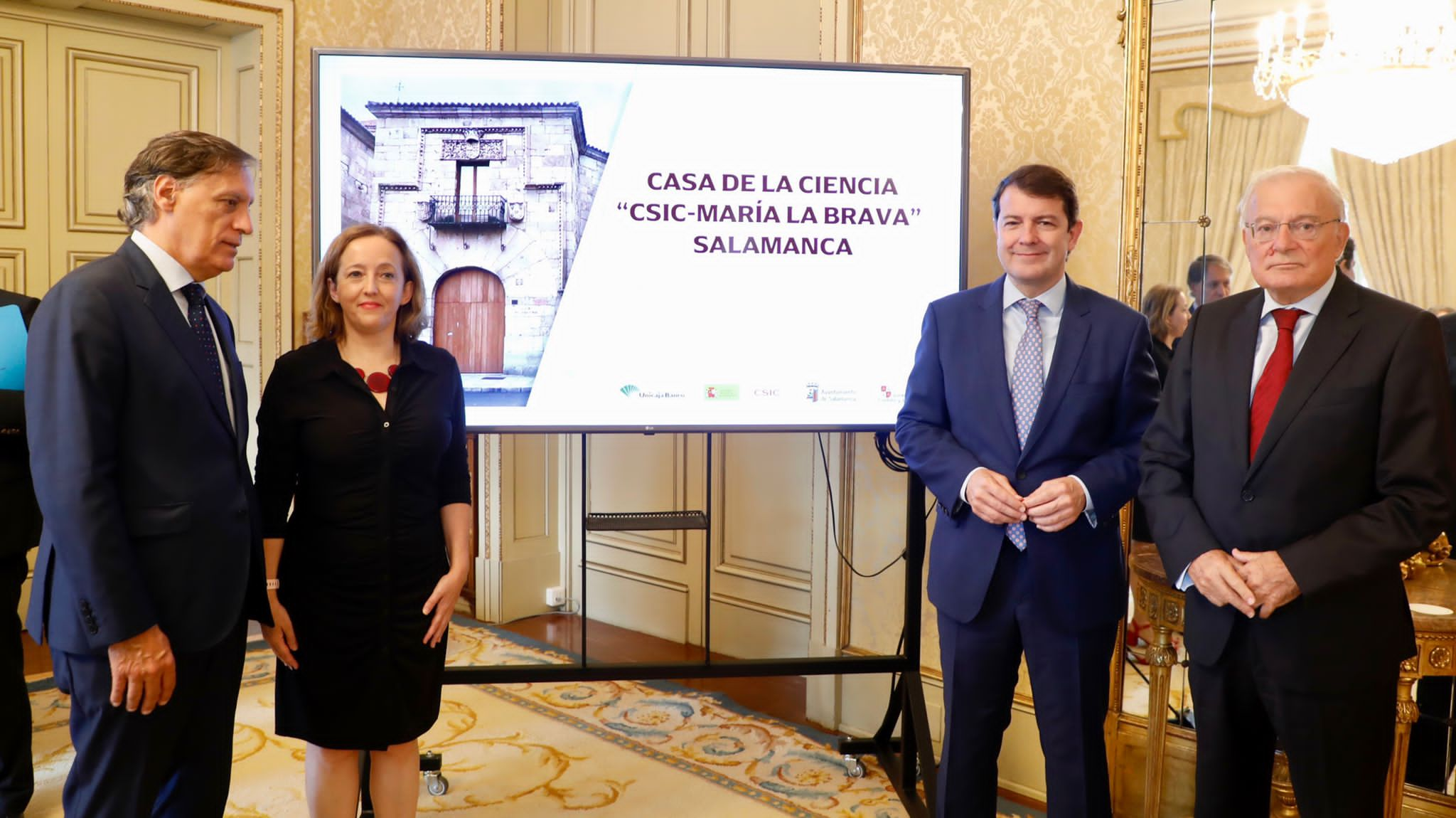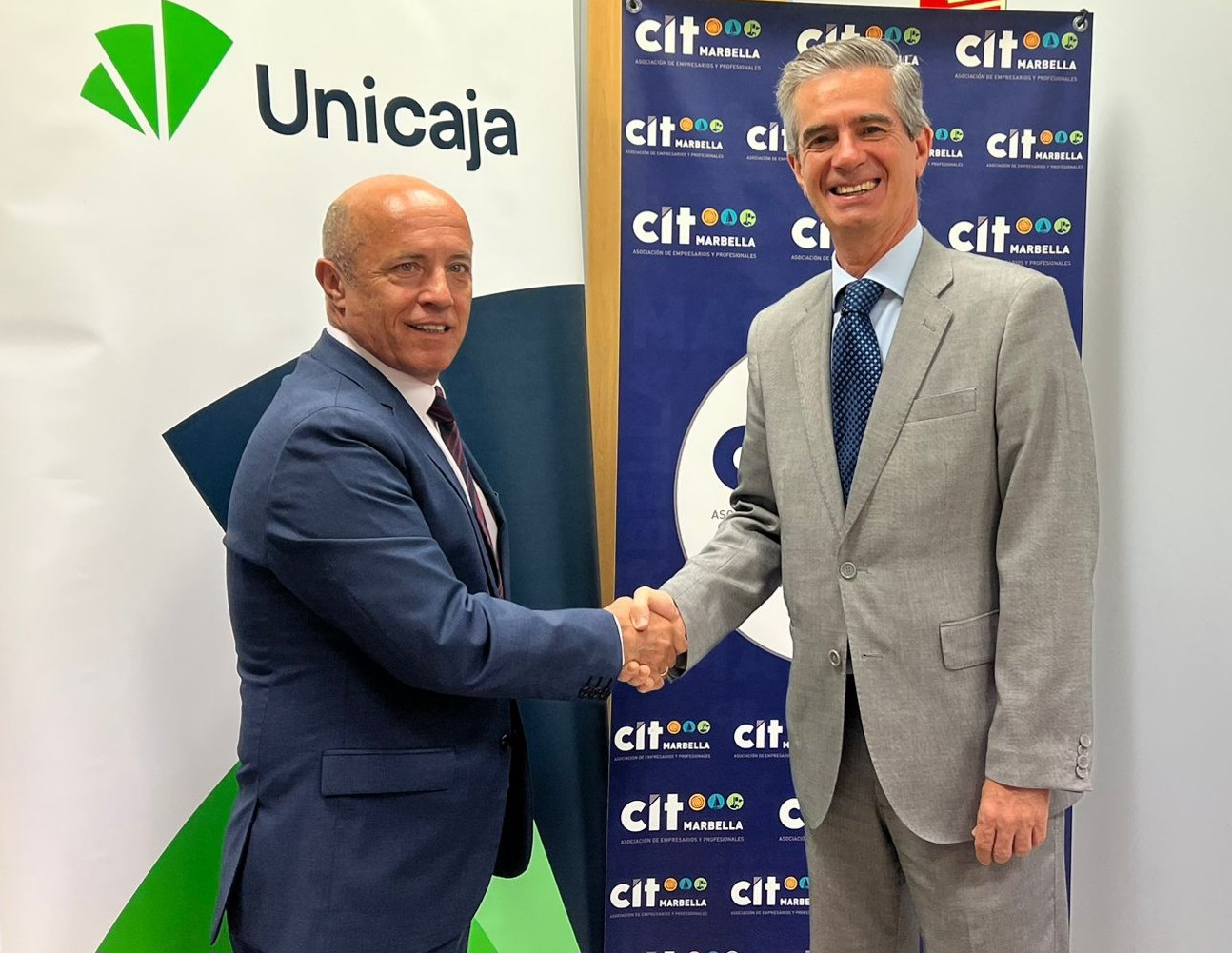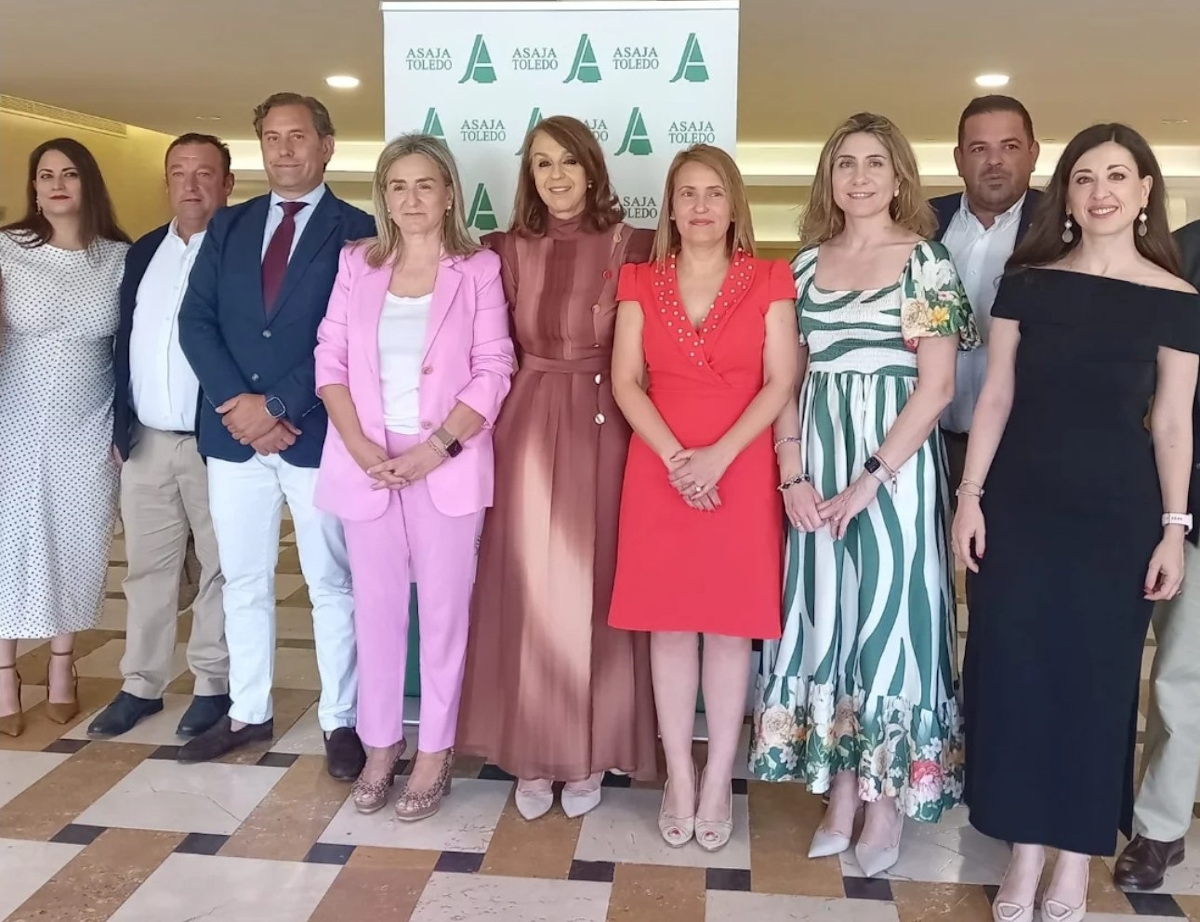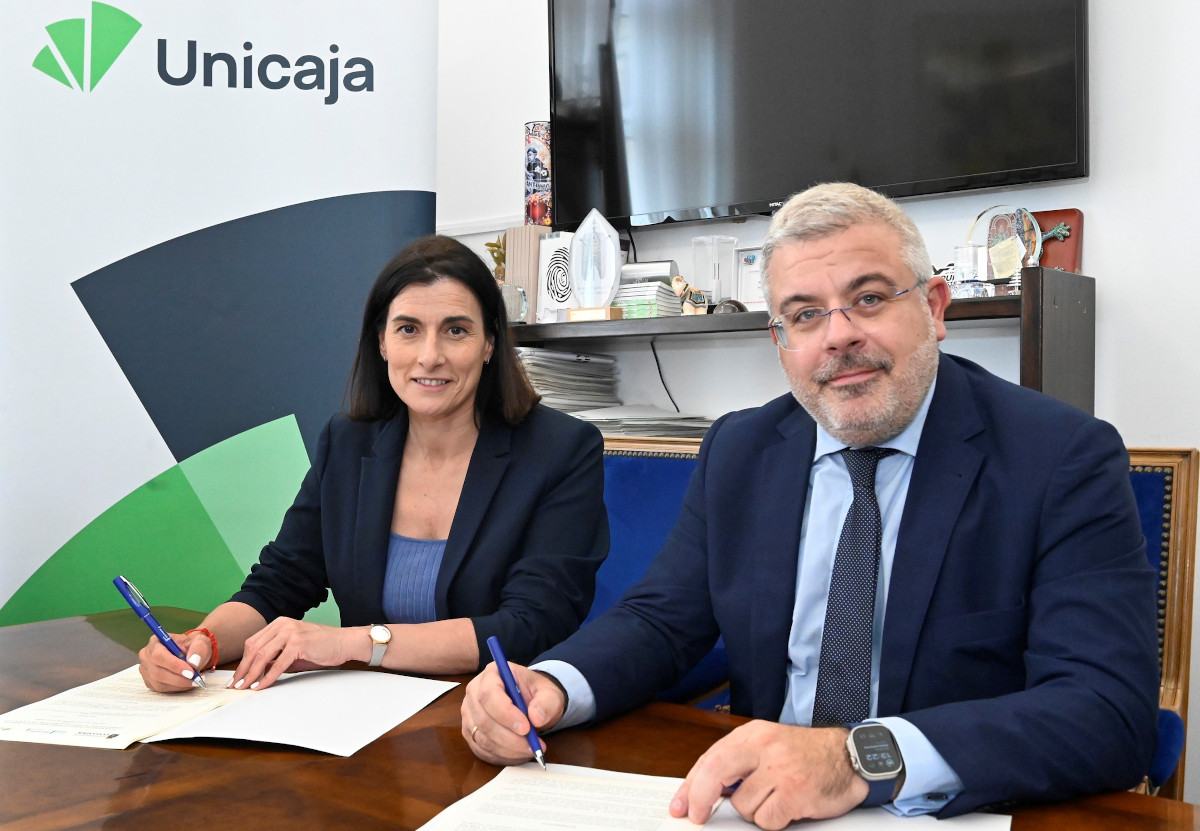The Spanish National Research Council (Consejo Superior de Investigaciones Científicas, CSIC), Junta de Castilla y León, Unicaja Banco and Salamanca City Council have joined forces to create the Casa de la Ciencia (House of Science) “CSIC-María la Brava”, under an agreement signed today with the aim of promoting research dissemination in the city of Salamanca. This project, of great scope and relevance, aims to become a driving force for scientific culture in the region and a management model at national and international level.
The new center will be located in a historic 15th century building called Casa de María la Brava, the use of which has been transferred by Unicaja Banco to CSIC. With a modern and remodeled interior undertaken by the bank, it will have among its objectives the creation of a new cultural space for the society and will serve as a meeting point for researchers.
This project was presented today at the Salamanca City Hall in an event attended by the President of Junta de Castilla y León, Alfonso Fernández Mañueco; the Mayor of the city, Carlos García Carbayo; the Chairman of Unicaja Banco, Manuel Azuaga; and the President of the Consejo Superior de Investigaciones Científicas, Eloísa del Pino.
The main goal of the new headquarters and Casa de la Ciencia is to create an international benchmark for scientific outreach from Salamanca, a city with a humanist tradition that stands out for its historical heritage and cultural offering. This goal joins other challenges undertaken by this new space for science and culture, such as, among others, creating a cultural offering for the general public, increasing the visibility of the CSIC, bringing the work of researchers closer to society, promoting the internationalization of projects or serving as a point of union between the different research centers.
In order to bring science to society, the new center will have an annual program featured on the ground floor of Casa de María la Brava, with a 200 sqm permanent exhibition hall. The permanent exhibitions will be combined with temporary exhibitions located on the first floor, where a space of more than 150 sqm will host national and international events, such as the “International Day of Women and Girls in Science” or the “International Day of Scientific Culture”, celebrated in September.
In addition to the above, there will be cross-cutting quality programs that will seek to connect with more specific audiences -such as the work of the “Tree of Science” that brings CSIC projects closer to citizens- and to achieve specific goals -such as the “Fostering Scientific Vocations” program, which seeks to awaken interest in science among the youngest members of the public-.
Statements
The President of Junta de Castilla y León said that this House of Science is a new driving force for the scientific and research vocation of Salamanca. “Research and innovation are paths of progress and modernity”, said the President, who pointed out that Castilla y León is in the top 5 in Spain in R&D spending in relation to GDP, while he assured that the Junta works with the aim of generating, attracting and retaining talent, and to promote its return. He also thanked all the entities for their participation and stressed that collaboration, dialogue and joint efforts are always the way forward.
For his part, the Mayor of Salamanca pointed out that the creation of the Casa de la Ciencia in Salamanca “provides us with an instrument that gives great visibility to the research work carried out in our city, which enjoys enormous national and international prestige”. He remarked that this new resource will be a “window open to the promotion of the scientific value of Salamanca, which is fortunate enough to host renowned research institutes”, as well as an attraction that will bring visitors, thanks to a scientific and cultural offering that will be of excellent level.
The Chairman of Unicaja Banco, Manuel Azuaga, highlighted the commitment of the bank to Castilla y León and Salamanca, “in the exercise of our Corporate Social Responsibility and the maintenance of the social commitment in the territories of influence as a hallmark, including Salamanca and Castilla y León”. Azuaga explained that talks with the City Council began in 2019 to give a cultural use to the María La Brava building. And he stressed that the project now presented had been possible “thanks to the union of wills and wills”, while remarking the importance of “public-private collaboration, which allows multiplying capacities to undertake actions that require significant efforts and dedication of resources”. Finally, the Chairman of Unicaja Banco stated that “this new center aspires to become a driving force for scientific culture in the region”.
This project reinforces Unicaja Banco’s relationship with the city, which has been reflected in recent years in other initiatives, such as the transfer to Salamanca City Council of the Cultural Center in Plaza de Trujillo and of a plot of land in Patio Chico, next to the Old Cathedral.
Finally, the President of CSIC, Eloísa del Pino, stressed that this new space “is born with the vocation to serve as a driving force of scientific culture in Salamanca and Castilla y León, and mainly as a meeting place for the Castilla y León society” and will also “strengthen the presence of the CSIC in this region”. She also stressed that the CSIC intends that this new initiative, the Casa de la Ciencia María la Brava, “will become a national and international benchmark, bringing added value to a city like Salamanca, which already stands out for its historical and cultural heritage, to promote its development as a creator of knowledge and as a scientific and economic attraction pole”.
History of Casa de Doña María la Brava
The Casa de Doña María la Brava is a 15th century building, located at number 5 of Plaza de los Bandos, in the heart of the old town and about 250 sqm from the Plaza Mayor. It is a historic-artistic monument, restored in 2008 by Unicaja Banco to be used as a museum, after its acquisition.
The four-story building has a useful area of 1,282 sqm and its interior has been completely remodeled. It is a great representative example of the houses of the Spanish nobility of the second half of the 15th century.
For many years of the 20th century, the house hosted a high school and the premises of the Colegio Farmacéutico Salmantino.
Doña María Rodríguez de Monroy, la Brava (“the Brave”), belonged to an important family of the 15th century, who fought in an almost endless war for the absolute hegemony of the city of Salamanca, in a period known as “Guerra de los Bandos” (“War of the Bands”), due to the confrontation between different groups. Her sons died in one of those fights, and she found the murderers, had them killed and beheaded. Later she placed their heads in the tombs of her sons. This fact made history remember her by the name of Doña María La Brava.
CSIC in Castilla y León
Castilla y León is home to five CSIC centers, four of them joint centers with universities in the region. Within the area of Biology and Biomedicine, the following institutes should be mentioned: Institute of Functional Biology and Genomics (IBFG, CSIC-USAL), Institute of Molecular Biology and Genetics (IBGM, CSIC-UVA) and the Institute of Molecular and Cellular Biology of Cancer (IBMCC, CSIC-USAL), which stands out for its oncological studies in basic science and applied medicine.
In the area of Agricultural Sciences, the CSIC has in Castilla y León the Institute of Mountain Livestock (IGM, CSIC-ULE), which stands out for its research in the technological modernization of livestock systems, and the Institute of Natural Resources and Agrobiology of Salamanca (IRNASA), a CSIC center that performs multidisciplinary analysis of ecosystems in search of scientific solutions for their conservation.
The CSIC also has a Bioincubator in the Boecillo Technology Park (Valladolid), currently managed by the Institute for Business Competitiveness of the Regional Government of Castilla y León.



